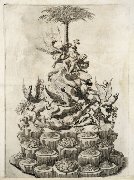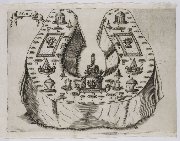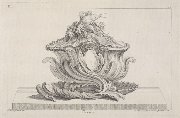Festivals Collection—Themes
Contents
|
| |||||||||||||||||||||||||||||||||
Banquets

|
|
Court and civic banquets were an integral part of the conspicuous consumption that characterized festival productions. Decorations, sculptures, and favors made of food were designed to give focus to the theater of the table. Featuring specially commissioned works of art, precious metals, glass, crystal, rare fruit, and rich confections, the banquet's ornate presentation signaled the wealth of the patron and the eminence of the guests.
Cookbooks, Serving Manuals, and Compilations

|
|
Based on oral traditions passed down from master chefs and stewards, cookbooks and manuals began to be published in the 16th century. These practical manuals provided detailed instructions on ingredients, food preparation, menus, table settings, carving, and the art of table decoration, including folded napkins. By the 18th century, reference books like Diderot's Encyclopédie presented definitions and in-depth descriptions of all aspects of culinary production.
Cuccagna Monuments

|
|
According to folklore, the Land of Cockaigne (Cuccagna in Italian) was a mythical place of plenty, like paradise on earth. Temporary art and architecture based on the legend took the form of outdoor monuments; these often consisted of structures made of wood scaffolding, papier-mâché, stucco, and were decorated with meat, cheese, bread, and pastry, usually built in the central square of the city or near the royal palace.
Street Festivals

|
|
Following patterns set by Roman triumphs and medieval religious processions, popular festivals took place in city streets. These celebrations marked court anniversaries, civic holidays, and religious feast days, such as Carnival, during the days just before Lent. Harvest festivals celebrated the success of a region's agricultural products, often incorporating the gathering of grapes and winemaking into the ceremonies.
Tableware: Meissonnier's Designs

|
|
Modeled on real fruits, vegetables, and shellfish, Meissonnier's fantastic variations designed for silverware correspond directly to earlier sugar paste table sculptures. They complement artistic table displays made of food and ice, echoing designs for porcelain from the same period.

